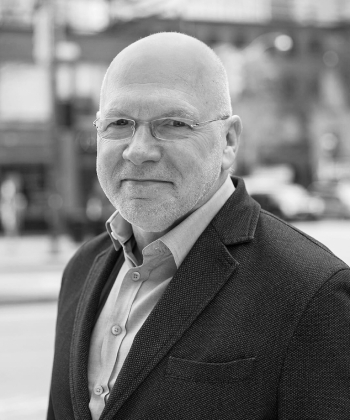To decarbonize, know your type!
This webinar is part of the RAIC 2024 Conference on Architecture, now available to stream!
Topics: Climate Justice and Resilience, Sustainability, Adaptation and Mitigation
Length: 1 hour | What's Included: Video, Quiz, and Certificate of Completion

Designing to decarbonize buildings requires a team is informed about chief energy consumers in a building and about how the building type affects a design. Strategies differ dramatically depending on the building’s functional program; they differ if they are a retrofit, an addition renovation, or a new construction; and they differ depending on the energy economy of the region.
Using three case studies explores how building type informs the design strategies needed to successfully decarbonize a design. The first case study is a ZCB retrofit of a 1970’s municipal office in Brampton, ON); the second is a zero carbon LEED Gold classroom addition in Winnipeg, MB; the third is a zero carbon, net zero energy EMS station in Scarborough, ON.
Attendees will learn to recognize key energy consumers specific to a building type, how key energy consumers influence system choices and aesthetic decisions for that building type and how focusing on decarbonizing the building type can yield award winning design strategies.
By the completion of this session, participants will be able to:
- Recognize key energy consumers specific to a building type.
- Learn how key energy consumers influence system choices and aesthetic decisions for a particular building type.
- Learn how focusing on decarbonizing the building type can yield award winning design strategies.
- Learn to recognize the difference between decarbonization and net zero energy.
Subject Matter Experts:
Michael Leckman
B.Arch, RAIC
Principal, Diamond Schmitt

As Principal at Diamond Schmitt, Michael Leckman champions sustainable innovations, enabling new approaches to design-focused sustainability.
Within the studio, he has pioneered two important initiatives of knowledge exchange: DSX, a digital platform for information sharing; and DSU, the office’s unique approach to continuing education. As founding member and Vice Chair of Toronto’s Design Review Panel, he has shaped a critical debate on city planning. He has also contributed to the profession as guest critic and lecturer at schools of architecture across Canada, and speaker at industry conferences, including CaGBC and the OAA.
Michael’s major completed works include the Bahen Centre at the University of Toronto; the Governor General’s Medal in Architecture-winning York University Student Centre; the Esplanade Arts and Heritage Centre in Medicine Hat; Algonquin College ACCE in Ottawa and Manitou a bi Bii daziigae at RRC Polytech. He is currently working the New Brunswick Museum, the AGO, and two zero carbon EMS stations.
Jeffrey Mitchell
M.Arch, OAA, CPHD
Associate, Diamond Schmitt

Jeffrey Mitchell, OAA, CPHD, infuses environmental design into every aspect of his projects by integrating sustainable technical, cultural, and material considerations that achieve efficient and elegant solutions for users. As Chair of Diamond Schmitt’s Sustainability Committee, his commitment to crafting beautiful and climate-responsive buildings is channeled through innovation, and by empowering teams to set their own action-focused environmental goals.
Jeff is a licensed Architect and a Certified Passive House Designer. He received his Bachelor of Architectural Science and Master of Architecture from the Toronto Metropolitan University with a focus on architectural systems and their integration through contemporary and innovative building science practice.
Pricing A-La-Carte



